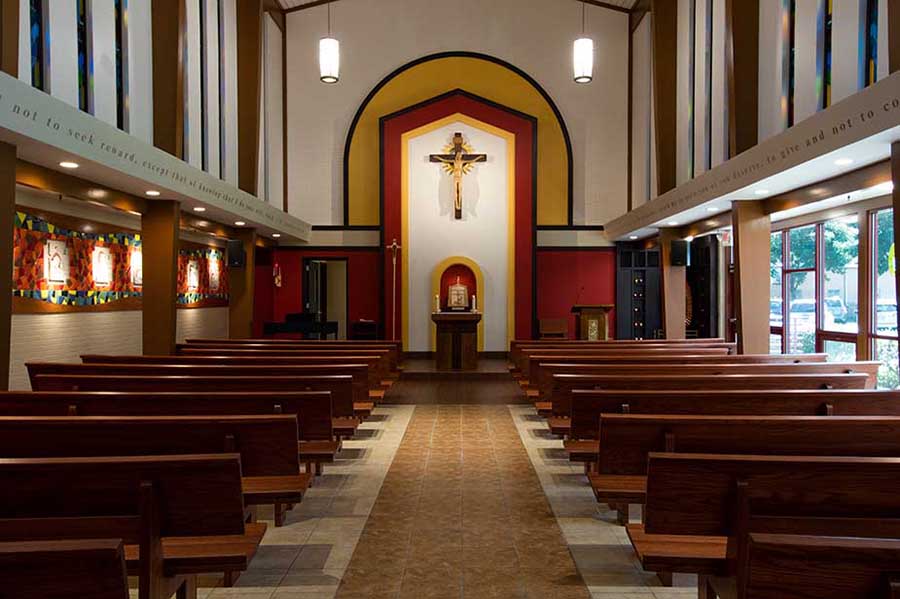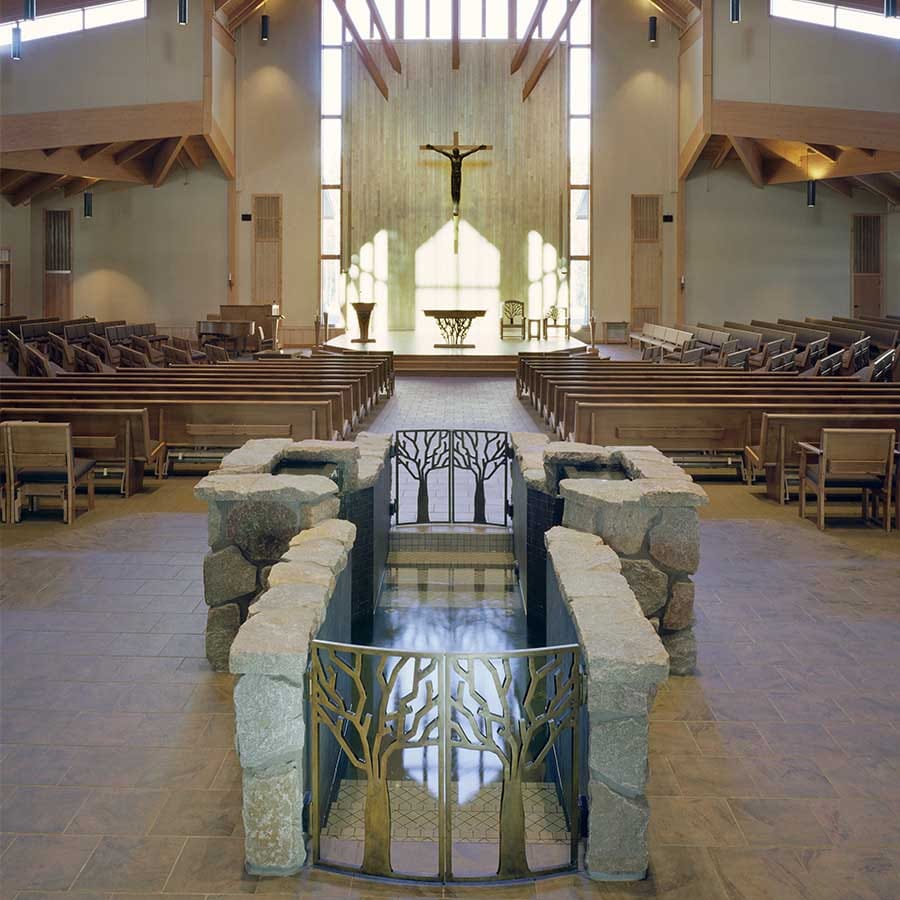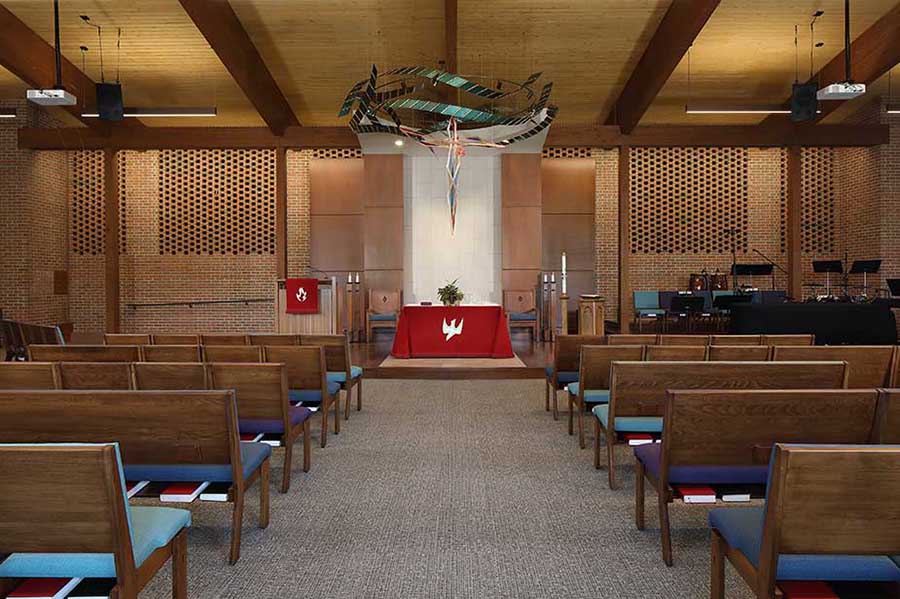Experience in Meaning, Worship, and Pragmatism
Hiring an experienced church architect for the design of your sanctuary is an important step to providing for your congregation. The right team, with deep knowledge of church design and working with your church building committees, can make profound contributions.
The role of a church architect extends far beyond the realm of conventional architecture. Experienced religious architects understand the nuances of design for different theologies with a unique understanding of religious symbolism and the intricacies of creating a space that embodies the essence of faith and spirituality, that resonates with your congregation, and serves as a conduit for a divine connection
That is a lot of words.
This blog post will attempt to simplify this topic and illustrate the value of working with an experienced church architect.
A church architect integrates religious symbolism
An architect focused on religious design understands the rich history and traditions of different religious practices. This knowledge allows the design team to creatively incorporate appropriate symbols, imagery, and sacred geometries into the sanctuary. A specific church design may seek a sacred ambiance utilizing elements such as lighting, materials, and spatial arrangement to evoke a sense of awe and wonder. The strategic placement of the altar, choirs, and pews, combined with the interplay of natural light and shadow, can all contribute to creating a profound and transcendent atmosphere.
There are differences within each Faith that impact the design of the sanctuary: The cross transept common in Catholic Church layout is not the right configuration for a Methodist Church sanctuary. Similarly, the prominence and decoration of a Catholic Church altar are much different than desired for some Unitarian Universalist Churches. Some churches highlight worship bands or require highly integrated video and audio systems for rebroadcast to online members. Each church has different needs and each sanctuary shall properly provide. The resulting design may be subtle or stunning, but must always attempt to convey meaning. Thoughtfully integrating religious symbolism can evoke emotion, ignite spiritual fervor, and foster a sense of reverence that helps the faithful to contemplate their spirituality and their connection with the divine.
The sanctuary is important to a Church Architect
A church architect recognizes that a place of worship is not merely a physical structure: It is a sanctuary that nurtures the souls of the faithful and makes clear the plan of redemption. A sanctuary is a place where individuals seek solace, guidance, and inspiration, and to be amongst others with God. The role of the religious designer is to translate these spiritual aspirations into tangible architectural forms.
There is a practical side to worship. For instance, one of the activities a church designer will think about is prayer:
- Do parishioners sit, stand, or kneel?
- Do they pray as a congregation, or singly by themselves?
- Does prayer benefit with eyes open, concentrating on a sacred object or person?
- Do the congregants pray with hands clasped, hands raised, or holding hands with others?
We strive to create an environment that fosters prayer, meditation, and introspection, allowing worshippers to transcend the distractions of the outside world and focus on their connection with the divine. Careful, faith-specific religious design by an experienced church architect ensures that the sanctuary becomes a space of transformation.

The practical issues of church design
In addition to the spiritual and emotional aspects, a practiced church architect also addresses the practical needs of the congregation. Cost is always an issue. The cost of the religious ambiance described above needs to be deftly balanced with the practical needs of the church.
For instance:
- Can the pews be rearranged to support the large attendance of Easter and Christmas services?
- Can all parts of the service be supported without rearranging the sanctuary?
- Can congregants be informed of the order of the service, or musical selection?
- Can the sanctuary support different styles of worship?
- Can the disabled easily participate in the service?
- Can lighting provide for a funeral and a wedding, and even enhance the service?
- Can the heating and cooling support the wide temperature swings typical as the church fills?
Church architects consider such factors, and more, to ensure that worship services and religious ceremonies can be conducted smoothly and inclusively. Especially important now, is flexibility to ensure the church is adaptable to new activities and ministries, and able to accommodate diverse and changing needs while maintaining the sanctity of the sanctuary.
A church architect is faithful in design
An experienced religious architect possesses a deep understanding of the cultural, historical, and liturgical aspects that shape the traditions of worship. And the associated costs of providing an impactful sanctuary. By collaborating closely with religious leaders and the congregation, an experienced church architect can craft a design that aligns with the beliefs and practices of the community, creating an affordable space that is authentic and meaningful.
The skills and experience of a church architect can help to lead your church through the challenges and requirements associated with your project. There are many criteria you may use to select your architect, none perhaps as important as their understanding of how to balance the pragmatic issues of church design with the profound architectural and religious symbolism important to sanctuary architecture.
Our sincere hope is that this short blog post has helped to bring light to some of the issues, and provided useful guidance to help make your design project a testament to your faith. Contact a church architect from our Church Design Studio for more information about the steps to consider for your project.


